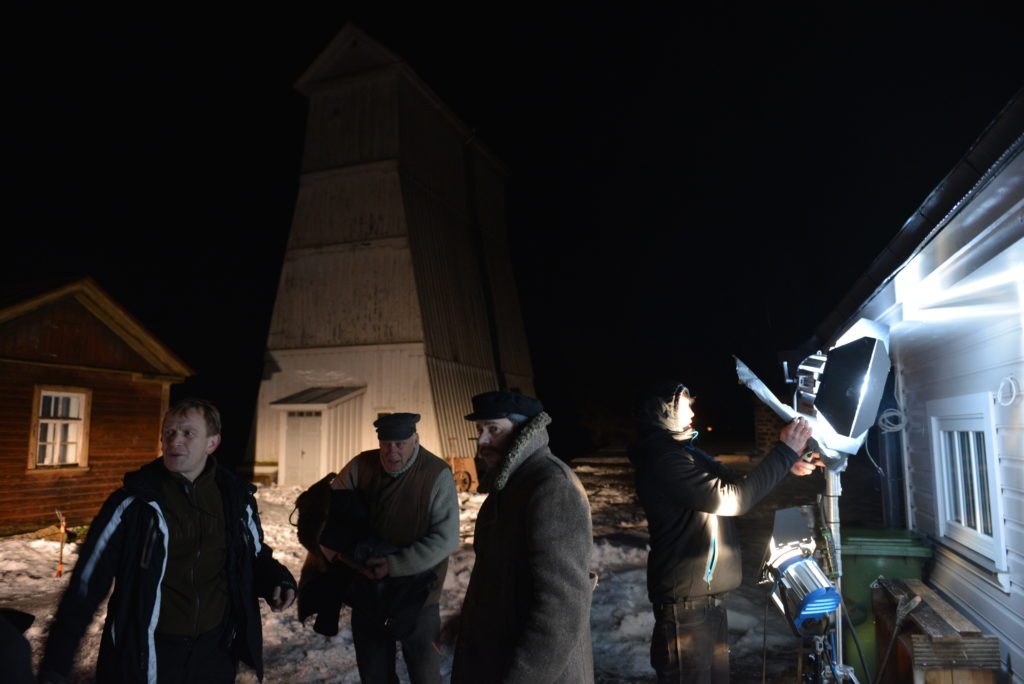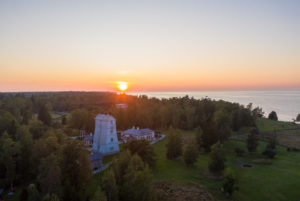What makes the lighthouse special is that it is the oldest working lighthouse on the Baltic Sea coast. It is also the only preserved wooden working lighthouse. Käsmu lighthouse, which has long been out of service, is the other one preserved in Estonia.
The lighthouse keeper lived in the lighthouse in the early years. There is a small, traditionally built log house in the lighthouse. The pride of the room is the traditional Russian oven, which heated the room and made bread. During winter months, the lighthouse keeper could warm himself/herself by sleeping on the stove. The lighthouse keeper’s job was to keep the lighthouse’s lantern in working order (at that time using oil lamps) to make sure the glasses were clean and that there was enough lamp oil. Lighthouse keeper lit a fire every night and put it out in the morning at sunrise.
There was a big storm ten years after the lighthouse was completed. After that, both Suurupi upper and lower lighthouses needed restoration.
One floor and a small balcony were added to the wooden lighthouse. The all-white lighthouse has a particularly romantic feel due to the windows that open to the sea, which all look different. There is a small window facing the land on the top floor, which is also facing Suurupi upper lighthouse light. Using that window, the lighthouse keepers synchronised the lights.
Lighthouse keeper’s tasks have changed slightly over time. The biggest changes have been related to technical innovations, but the main thing is that the light in the lighthouse has remained the same.
Visiting the lighthouse: Lighthouse can be visited by 10 people at a time. We ask others to wait a bit, it will be your turn soon. Due to the fact that the stairs are old, narrow and worn by watchmen. Mind your head.
Over time, the lighthouse has experienced different threats. Storms, wars and modernisation. Storm damage has been repaired and the lighthouse has stood high after wars. One of the biggest dangers was in the 1930s when the plan was to replace the high-maintenance wooden lighthouse with a reinforced concrete lighthouse. The wooden lighthouse remained because of a shortage of money. Another danger was that when the Germans retreated during World War II, they wanted to blow up the lighthouse and related buildings. But the family, who were working as lighthouse keepers at the time, begged them and they luckily happened to be Germans with mercy, and so the whole complex was preserved in an authentic way.
According to one legend, after the First World War, at the beginning of the last century, there was a fisherman’s house next to the lighthouse complex. The fisherman had a son who went to the beach to pick up anything that the sea washed up on the beach. Among other things, he picked up sea mines and removed inner explosives to sell them and get money. Once, however, unfortunately a mine exploded and the whole building blew up.
Suurupi is a historical coastal village. After World War II many Estonians fled to Finland and Sweden and continued to travel all over the world. People were scared that they would be declared enemies of the state. The accused were shot or taken to Siberian prison camps. They escaped secretly in the dark and also under this lighthouse. “Tuulepealne maa” is filmed in this complex. Several shots of the 13th part of the movie “Ei ole sõda noortele meestele” were filmed here. This is a full-length Estonian feature film about Estonia during World War II in 1943, when the Germans had to start retreating from the Soviets. Frequent filming activity took place at the lower lighthouse – the escape with boats to Finland. The film was made for the 98th anniversary of the Republic of Estonia in 2016.
 Suurupi.Travel
Suurupi.Travel 
